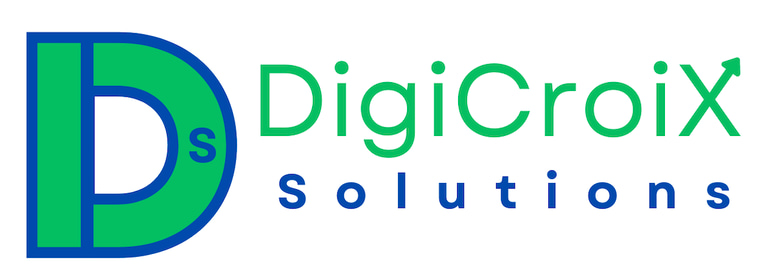Why Healthcare Ads Fail Without SEO Integration
Avoid a common pitfall: running healthcare ads without SEO leads to wasted budgets. Learn how combined tactics boost visibility and conversions. Book a strategy call to unite your SEO+ads plan.
Vishwa Raval
10/9/20255 min read


The Importance of SEO in Healthcare Advertising
In today’s digital age, the significance of Search Engine Optimization (SEO) in healthcare advertising cannot be overstated. Effective SEO strategies enhance the visibility of healthcare services in search engine results pages, allowing providers to reach a broader audience. A study reveals that nearly 75% of users do not scroll past the first page of search results, underscoring the necessity for healthcare professionals to optimize their online content to ensure discoverability.
Moreover, SEO plays a critical role in improving the discoverability of healthcare services. Utilizing optimized keywords related to specific health issues enables potential patients to find relevant information easily. For instance, individuals searching for symptoms or nearby healthcare providers are likely to rely on organic search results before considering paid ads. This trend highlights the importance of integrating SEO with advertising campaigns to achieve optimal reach.
Building trust with potential patients is another essential component that SEO contributes to healthcare advertising. Websites that rank highly in search engine results are often perceived as more credible and trustworthy. By maintaining a robust online presence through quality content and effective SEO strategies, healthcare providers can enhance their reputation and foster patient confidence. Trust is further amplified when potential patients find informative articles, reviews, and resources readily available during their search.
Furthermore, statistics indicate that a synergistic approach combining both organic search and paid advertisements can lead to significant improvements in patient engagement and conversion rates. A joint study showed that healthcare organizations that integrated SEO into their advertising strategy experienced a 35% increase in patient inquiries and a 50% increase in appointment bookings. This interdependence illustrates how essential SEO is to maximize the effectiveness of healthcare advertising in today's competitive landscape.
Common Pitfalls of Running Ads Without SEO
Healthcare providers frequently encounter significant challenges when they run advertisements without implementing effective Search Engine Optimization (SEO) strategies. One of the most prevalent mistakes is allocating substantial budget resources to campaigns that fail to target the appropriate audience. Without keyword research and a solid understanding of user search intent, these ads can be displayed to individuals who do not need the services being advertised, resulting in wasted expenditure and a poor return on investment.
In addition to misallocated funds, healthcare ads lacking SEO integration often suffer from severely limited organic visibility. Ranking low on search engine results pages (SERPs) means that even well-crafted advertisements may not reach potential patients effectively. For instance, a dental clinic might invest in pay-per-click ads promoting teeth whitening services, but if they do not optimize their website content for relevant keywords, their organic search traffic will remain low. As a result, relying solely on paid ads can lead to missed opportunities for building brand awareness and trust among potential clients.
Furthermore, the absence of an SEO strategy also restricts retargeting efforts. Retargeting allows advertisers to reconnect with users who have previously interacted with their site, increasing the chances of conversions. Without SEO, healthcare providers may miss the chance to create compelling content that encourages these users to return, such as informative blog posts or patient testimonials. For instance, a physical therapy clinic might fail to attract returning visitors by not producing articles on common recovery methods, resulting in a lower engagement rate and ultimately, fewer conversions.
In summary, the pitfalls of running healthcare ads without a comprehensive SEO strategy can lead to wasted budgets, reduced visibility, and the absence of effective retargeting initiatives. These elements combined often culminate in low conversion rates and ineffective advertising campaigns.
Benefits of Combining SEO and Advertising Strategies
Integrating SEO with advertising strategies in the healthcare sector offers a myriad of benefits that can significantly enhance campaign performance and lead generation. First and foremost, SEO ensures that healthcare advertisements reach the right audience at the right time. By optimizing content for relevant keywords and phrases related to healthcare services, healthcare providers can increase their visibility on search engines, resulting in higher click-through rates for their advertisements.
Moreover, this combination fosters enhanced brand authority. When healthcare ads are supported by a solid SEO foundation, it positions the organization as an expert in the field. This perceived authority is crucial in a sector where trust is paramount. Potential patients are more likely to engage with ads from organizations that appear higher in search results, as they equate rankings with credibility. This, in turn, can contribute to improved conversion rates, as individuals are more inclined to reach out for services when they feel confident in the provider’s expertise.
Additionally, the integration creates a seamless experience for potential patients. SEO provides a holistic view of what users are searching for, enabling healthcare providers to tailor advertisements that align closely with consumer needs and inquiries. For example, by analyzing search queries, a healthcare provider can develop targeted ad campaigns that directly respond to common health concerns or services, further increasing relevancy and engagement.
Real-life case studies illustrate the effectiveness of this approach. Healthcare providers that have successfully integrated SEO strategies into their advertising campaigns have reported substantial improvements in lead generation and ROI. By carefully tracking metrics and analyzing performance, these organizations adapt their strategies, such as refining the targeted keywords in their advertisements while ensuring that their website content aligns with search intent. Through this iterative process, they optimize their marketing efforts and achieve quantifiable results that demonstrate the value of integrating SEO with advertising.
How to Create a Unified SEO and Ad Strategy
Developing a cohesive strategy that integrates both Search Engine Optimization (SEO) and advertising is essential for healthcare providers aiming to maximize their outreach and effectiveness. To achieve this, beginning with comprehensive keyword research is crucial. This process helps in identifying not only the terms and phrases that potential patients use to search for healthcare services, but also aligns with the keywords targeted in advertising campaigns. Utilize tools like Google Keyword Planner or SEMrush to analyze search volume and competition for these keywords. This will enable a focused approach that supports both your organic and paid efforts, ensuring consistency in messaging.
Once relevant keywords are identified, the next step involves content creation. Content plays a pivotal role in enhancing both SEO and ad effectiveness. Healthcare providers should create informative, engaging, and valuable content that addresses the identified keywords. This includes writing high-quality blog posts, articles, and patient resources that reflect common patient inquiries and needs. Utilizing visuals and videos can further enhance engagement. Additionally, ensuring that content adheres to SEO best practices—such as optimized meta tags, headers, and integrated calls-to-action—facilitates better discoverability both organically and via ads.
It is equally vital to implement tracking and measurement methods for your integrated campaigns. Using analytics tools, such as Google Analytics, can help monitor the performance of both SEO and paid advertising. The key metrics to focus on include keyword rankings, organic traffic, click-through rates, and conversion rates. By analyzing this data, healthcare providers can discern which strategies are most effective and make necessary adjustments to improve performance.
For healthcare organizations looking to enhance their online presence through the integration of SEO and advertising, a unified strategy can yield significant results. To explore how we can help optimize your SEO and advertising efforts, consider booking a strategy call with our team.
Get in Touch
Book your free consultation today and let's create a strategy to elevate your success!


Address
94 Shree Nagar Apartment, Sola Road, Naranpura, Ahmedabad, Gujarat, India 380063
6706 Fulton Avenue, Burnaby, BC, Canada V5E 3H1
Phone
+91 88497 12474
Quick Links
© 2025. All rights reserved.
Useful Links
Engagement
Subscribe
+91 88497 12474
